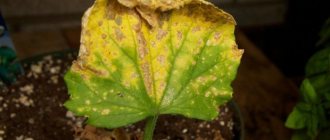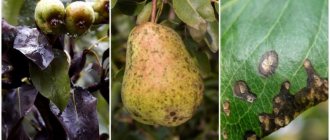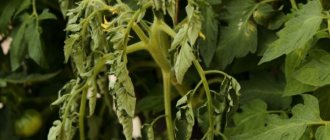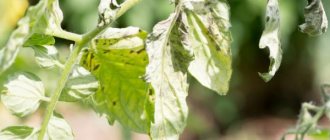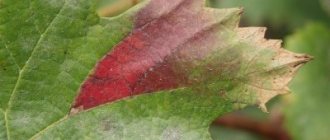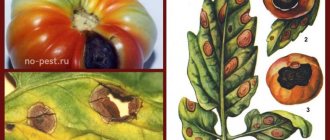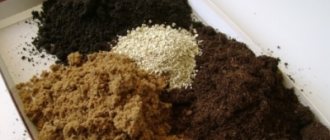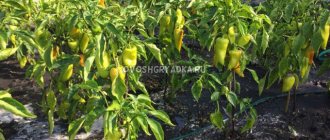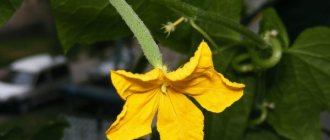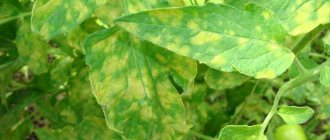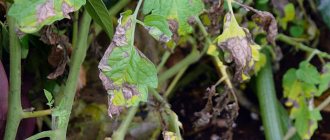What is the reason for the appearance of white spots on seedlings? Experienced gardeners claim that growing tomatoes will not be difficult at all, because this plant is unpretentious. Their harvest always consists of strong, large and juicy fruits. But can beginners cope with this plant?
Everything is not as simple as it seems. Tomatoes will have to be protected from pests and diseases; excessive heat, cold or rain can also destroy the plant.
Excessive sunlight, sunburn, wind
The most common cause of whiteness on tomato leaves, especially young seedlings that have recently been transplanted, is aggressive exposure to sunlight.
Although tomato plants require plenty of sunlight for healthy growth, suddenly changing the location of the seedlings (planting them in the ground) can shock the plants and cause white spots to appear on the tomatoes.
Leaves may curl and break, leaving minimal foliage on the plant. Winds in the transplant area can also aggravate the condition.
To avoid this problem, you should take the following measures:
Young shoots must be accustomed to the sun from the very beginning by placing them near a window.
If the windows face north or weather conditions do not allow, the seedlings should be exposed to the sun for some time before planting in the ground, gradually increasing the stay time.
After planting in a garden bed or greenhouse, the plant should be covered with lutrasil.
If you have already encountered this problem, place the grafts in the shade for a few days and then gradually expose them to the sun for 2-3 hours every day for one or two weeks.
If hot, dry winds are also interfering with tomato growth, try to isolate the plant from them. In any case, weathering or sunburn are not serious problems, and the plant will soon recover. Simply remove any affected leaves.
- Killing flies
Succinic acid for tomatoes and cucumbers: tips for use and choice of dosage for indoor, greenhouse and open-ground plants (80 photos)
How to save tomatoes from frost - ways to protect seedlings and greenhouse plants. Review of the best ideas, advice from gardeners (80 photos)
Soil salinization
Another reason why a white coating may appear on the leaves of tomato seedlings is increased soil salinity. This soil condition can be diagnosed using the visual method.
To do this, you need to carefully look at the soil; when salinized, you can find a yellowish coating in the form of grains on its surface. In order to save the seedlings, it is necessary to remove the top layer of soil, replacing it with new fertile soil, and then water exclusively with filtered water, which should wash the soil.
Diseases
In addition to environmental influences, another explanation for tomato plants with white leaves is diseases, usually fungal, which may be indicated by more than just white leaves.
Cladosporiosis
Cladosporiosis or brown spot is a fairly rare disease that affects the leaves of the plant. As a rule, tomatoes grown under film are at risk, so greenhouses should be frequently ventilated as a preventive measure.
Brown spot begins to appear during the flowering of the plant, and actively progresses when the fruit ripens. Its characteristic features are:
- Light “fluff” on the inside of the leaf.
- The spots begin to turn brown over time.
- The appearance of pale yellow spots on the outside of the leaf.
- The leaves curl and dry out. This disease is the main explanation why tomato leaves curl and dry out.
A solution of copper sulfate in limestone milk will help to cope with cladosporiosis. Treatment is carried out in 4 cycles with an interval of 10 days.
White rot
The disease is a fungal disease, and its danger during cultivation is low. However, it can cause negative consequences during fruit storage.
Symptoms of the disease:
Weevil on strawberries - how to fight the pest, how to treat strawberries and means to get rid of insects (105 photos)Why do cucumber leaves wither in a greenhouse and in open ground: what to do and how to fight diseases and pests (115 photos)
How to treat raspberries against pests: traditional methods for processing raspberries and a description of the most dangerous insects (130 photos and videos)
- The appearance of white flocculent mycelium on the stems and base of the leaves.
- Weeping spots appear on the plant.
- The plant begins to wither.
Among the main ways to eliminate the disease are the following:
- Elimination of infected fruits.
- Lubricate the cut area with a solution of copper sulfate, as well as crushed chalk or coal.
- Using Bordeaux mixture
Powdery mildew
The disease also belongs to the fungal group. The infected plant becomes covered with yellowish spots, as well as a grayish coating. To prevent powdery mildew, it is worth treating tomatoes with Zineb; it is also used to treat it.
Septoria
The disease can be noticed by brown spots that gradually turn pale and acquire a yellowish outline. Fitosporin is used to treat the disease.
High temperature and excess moisture
Very often, under the influence of direct sunlight and high temperatures, tomato leaves begin to curl. In this way, tomatoes try to protect themselves from moisture loss. In the evening, the leaves bloom again to replenish their moisture reserves. To protect the plants, a canopy is built over them during sunny hours. In such a situation, many summer residents usually make the grave mistake of starting to water the tomatoes in the midst of the heat. This is not recommended, especially if you water by rain. With this method of watering, the water remaining on the leaves works in the sun like a magnifying glass, gradually burning out the foliage.
An excess of moisture, as well as a deficiency, can harm plantings and this can manifest itself in white stains on seedlings. This usually happens during a rainy period of summer. During heavy rains, if the soil is clayey, then water begins to accumulate near the rhizomes, cutting off the access of oxygen to them. Without receiving air, the plant begins to wither and dry out over time. To prevent this situation, when planting tomatoes, add loose soil to the soil so that water is absorbed faster. It serves as a kind of drainage system. In the bed itself, small furrows are made from the stem to the side for unimpeded drainage of water.
Fertilizers
Why do tomato leaves turn white? Finally, white spots can be caused by a lack or excess of nutrients. Plants that need nitrogen or phosphorus may have yellowish or white leaves.
A tomato fertilizer containing the proper amount of these nutrients is the solution. Lack of calcium or magnesium also causes leaves to bleach.\
Currant leaves curl, what to treat - what to do first and finding the cause of the problem (115 photos)Spider mites on cucumbers: methods of fighting and getting rid of them using folk methods. 115 photos and videos of growing cucumbers
Why tomato leaves turn purple: subtleties of growing seedlings and tips for planting tomatoes with your own hands
Deficiency or excess of nutrients
Leaves may curl from excess minerals
A lack of nutrients, as well as an excess of them, can have a detrimental effect on the condition of tomatoes. Often, many gardeners adhere to the rule - more is better than less and begin to fertilize their beds even more. Basically, among the common problems on the site, there is a shortage of mineral and organic fertilizers. The fertilizer used is fresh manure, various infusions or simply chemical fertilizers.
If there is an excess of fertilizers, the tomato is no longer able to absorb them and begins to curl the leaf so that the process of photosynthesis does not occur.
In addition, when the soil is abundantly fertilized and the temperature is high, ammonia begins to be released. It burns the leaves, which subsequently turn white, curl and die. The soil itself also suffers from ammonia. An excess of fertilizers has a detrimental effect on the biological processes occurring in the soil. If the temperature in the greenhouse is high, but the soil has not yet warmed up, then the nutrients in the soil are not activated. Therefore, plantings need to be fed with special fertilizers, with the correct dosage and time of application.
Photo of whitened leaves of tomato seedlings
Apical rot and streak
Blossom blossom occurs when there is a lack of calcium in the soil. If the leaves turn white unevenly or take on an unnatural shade, then it is possible that your seedlings have been attacked by blossom end rot. Without receiving enough mineral, seedlings begin to wither. If the situation is not corrected in time, you can lose the entire crop sown on this soil. If the correct conditions for growing tomatoes are observed, this disease will not attack your plantings.
Streak disease can affect entire tomato seedlings. With this disease, tomatoes begin to become covered with streaks of brown and white. The stem becomes thin and very brittle. Streak has no cure and will be nearly impossible to track early on. First, the seedlings grow, they develop ovaries, and then fruits, which grow to the level of peas and then fall off. Only after this, the leaves begin to change color. To avoid such a disease, it is best to buy factory-processed seeds.
Powdery mildew
All affected leaves must be removed
The marsupial fungus is the causative agent of this disease. Typically, this disease develops when plantings are dense and there are sudden changes in humidity levels in greenhouses and greenhouses.
The signs are as follows:
- the leaves are covered with a white coating on top, reminiscent of flour;
- yellow spots form on them below;
- at an advanced stage, the affected parts of the plant burn out and dry out.
For prophylaxis, the drug Zineb is used. In conditions of high humidity, in rainy summers, the beds are treated with this fungicide - once every three weeks, stopping a month before the planned harvest.
Before treatment, all damaged organs are removed from the affected bushes, and the cut areas are treated with copper sulfate. Then irrigation is carried out with Zineb or Trichodermin.
Septoria
If the tomato seedlings turn white, the damage may be caused by a fungal disease called septoria (white spot). This disease develops at high temperatures in dry summers.
It can be determined by the following characteristics:
- the appearance of shapeless brown dots or spots on the underside of the leaf;
- over time, the spotting grows, acquires a whitish-yellow tint and covers the entire leaf;
- later the white leaves become covered with numerous black dots.
Usually the infection affects the upper part of the seedlings. To save it, it is necessary to cut off the affected tops and spray the plantings with a biological product - Fitosporin.
This product is also used for prevention - treatment is carried out 20 days after transplanting plants to the site.
What measures should be taken
If the seedlings have white spots due to sunburn, it is necessary to install arcs on top of the tomato bushes. Cover the crop with agrofibre.
White spots on plants can form at various points in crop development
You should not plant plants in open beds on cold days; you should not cause unnecessary stress to the seedlings. In a greenhouse, tomatoes should be periodically sprayed with a solution of Zircon or Epin; these drugs effectively strengthen the plant’s immune system. Sometimes the leaves turn white due to roots damaged during handling. To prevent this from happening, it is necessary to transship the seedlings with a lump of soil.
Brown spot on tomatoes (video)
You should adhere to the following rules for growing tomatoes in home gardening:
- It is necessary to plant exclusively healthy plants that are not affected by diseases or pests;
- Watering should be carried out with warm water, directly at the base of the garden crop;
- Irrigation activities should be carried out in the morning, which will allow the tomato foliage to dry well;
- it is very important to promptly remove and destroy all affected plants;
- it is mandatory to follow the rules of crop rotation;
- good results are obtained by treating the above-ground part of a tomato bush damaged by the sun with a solution based on the drug “Epin”.
Systematic inspections of tomato bushes make it possible to detect the problem in a timely manner and develop an effective treatment plan.
To enhance growth processes, as well as to increase the resistance of garden crops to temperature and water stress situations, including heat and drought, it is recommended to treat with the drug “Verva”, diluted at the rate of 2.5 ml per 3 liters of water. Spraying of the aboveground part is carried out in several stages, at the flowering stage of each cluster. The average consumption of the working solution is approximately 300 ml for every 10 square meters. m of landing area.

